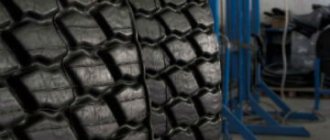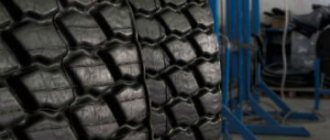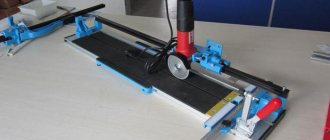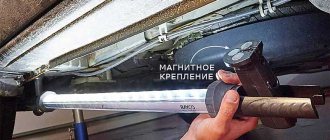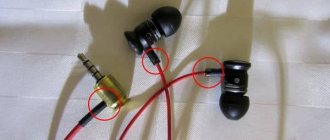Crumb asphalt consists of crushed materials. The material is often used in various areas related to road construction. It has become most widespread in modern times, thanks to the advancement of technology, namely after the introduction of a special unit that is capable of removing layers of long-term coating without damaging the base of the “cushion”. In this article we will describe in detail how to lay asphalt chips with your own hands.
Asphalt crumbs contain bitumen and recycled construction crushed stone. Depending on the classification, the fraction does not exceed a few cm. Multi-raw material crumbs, formed from the composition of crushed stone, sand, bitumen, and concrete, are also found. Experience shows that multi-raw material crumb behaves most optimally under our conditions.
The crumb goes through a certain preparatory cycle before it turns into the finished product. The cycle consists of several stages at once:
- removal of old coating;
- removal to the factory;
- splitting up;
- sorting and dispatch.
Composition of asphalt crumbs
The main components of the material are gravel, crushed stone, sand and bitumen. Concrete may also be present as a binder. The ratio of components depends on the brand of asphalt, the type and condition of the road surface during removal. On average, a crumb includes:
- crushed stone - 25–45%;
- natural and artificial sand - 50–60%;
- bitumen - 3–7%.
The concentration of the latter in crumbs is less than in asphalt - the binding component leaves the coating during the operation of the road, creating the need for its repair.
Specifications
The product is a crushed road surface. It is carried out at the repair site - asphalt paving equipment includes equipment that crushes the road surface. Grinding is carried out after removal. Pieces of asphalt are sent to granulate into crushers.
The result is crumbs 3–5 mm in size, differing, depending on the production method, in the following parameters:
- The concentration of the bitumen component is that there are more binding substances in the crumbs, which are produced on site, than in the removed waste sent for recycling.
- Requirements for operating conditions - material from the road is recommended to be used in summer; it must be heated to activate the bitumen and is suitable for completely replacing the sheet. The product obtained from raw materials delivered to the production site is suitable for cold seasons. Due to the lack of binding components, it is recommended to use it to eliminate local defects.
- Price. A cubic meter of material from a cutter, on average, costs 800–1000 rubles. For a similar volume of crumbs from a crusher they charge 600–800 rubles. The cost depends on the buyer's area of residence, as it includes delivery costs.
The crumbs may include different types of asphalt - this affects the weight and other characteristics of the product. So, the mass is 1 cubic. m of crushed pavement varies between 1.5–2.0 tons. The heaviest is asphalt concrete; mixtures without cement have less weight due to the absence of fine fractions.
Where is this material used?
The use of asphalt crumbs can be found in many areas. To a greater extent it occurs when:
- Construction of roads, highways;
- Construction of small sites near country houses;
- When sprinkling stadiums and play areas in parks and outdoor entertainment centers.
As you can see, it can be used in many areas; it is not uncommon to find crumbs in forested areas of parks, where bicycle and pedestrian paths are sprinkled. When constructing new highways, asphalt chips are used to strengthen exits and shoulders, protecting the new road surface from deformation and vibrations. An interesting feature in recent years is that many construction companies are using chips to fill the top layer of the base before laying the finished floor. This serves as additional insulation from the damp foundation.
- It is highly resistant to moisture and various weather conditions;
- Durable;
- Not washed away by floods;
- Significantly lower in cost, given the low production costs.
What is asphalt crumb good for?
The material is used by industrial enterprises and individuals. Recyclable materials are included in new asphalt mixtures. Depending on the type of product (cold or hot), the waste coefficient in the new material is 0.25–0.6. That is, the share of crumbs reaches 25–60%.
The material is also used for the following works:
- local repairs - the crumb will reduce the consumption of primary asphalt when filling holes;
- preparing the base of the route;
- covering secondary and country roads with low traffic levels;
- strengthening artificial terrain - recyclable materials can be used to fill the shafts of railway and highway tracks;
- improvement of household and public areas - laying of asphalt crumbs is carried out in parking lots, country roads, sports fields and floors of technical premises.
To work with recyclable materials, you will need equipment capable of compacting and melting the bitumen into the mixture. The last procedure is not necessary - you can lay the crumbs without heat treatment - the binder will bind the particles together during the compaction process.
Technology for laying asphalt chips
The application process depends on the area of application - when strengthening the relief, the mixture is scattered in an even layer (at least 20–30 mm) and leveled with a roller tool. In the case of laying paths, the site is first marked, and soil is excavated inside the contour of the future roadbed. Crumbs are poured into the recess and then compacted. The principle remains the same when creating secondary highways and landscaping the yard.
How to lay asphalt chips with your own hands
First of all, the required volume of raw materials is calculated.
Paths made of asphalt chips in the country will require a depth of 30–40 mm. With a width of 50 cm per 100 m of coverage, you will need 0.15 cubic meters. m of material. Or 0.23–0.3 tons of product, depending on density.
With a Kamaz carrying capacity of 6 tons, one vehicle is enough (almost 2 kilometers worth of raw materials) to mark routes in the yard and fill holes behind the gates.
Work order:
- Marking - a diagram of paths is drawn, which is transferred to the territory of the site.
- Preparing the site - 30-40 mm recesses are dug in the marked contours - the basis of future paths; boards or a concrete window sill can be placed at the bottom of straight sections to strengthen the structure in loose soil. Instead, geotextile bedding can be used.
- Filling the crumbs. If you plan to melt bitumen, you will need a tin barrel and thick gloves. A rake can be used for leveling.
- Tamping. For large jobs, such as priming the road in front of a private house, a miniature skating rink is rented. Decorative and narrow paths inside the yard are compacted manually with a roller tool. Wait at least 24 hours for the material to cool or set before using a new route.
Laying asphalt chips with your own hands is easy. The presented algorithm is also suitable for improving technical premises: a barn or a garage. When creating the basis of a parking space, the weight of the vehicle is taken into account. A parquet SUV will require a thicker floor compared to a passenger model.
What is the best way to shed asphalt chips? Asphalt crumbs. Laying over old coating
After we have described the basic requirements for how to properly lay a road surface made of crumbs, let’s move on to the specific features of working with this material.
The road, created from asphalt crumbs, initially has a dense structure. In cases where heavy traffic or strong influence of meteorological factors is predicted, the route is additionally poured in order to increase the density of the material. To do this, use a bitumen mixture . It is poured onto the laid crumbs before final leveling.
Above we described how to lay asphalt chips on a new highway. Now let's look in more detail at the specifics of laying asphalt on an old surface. During construction work, the technological process undergoes a number of changes:
- No excavation required.
- The initial stage is to repair the old canvas and clean it of dirt.
- After preparing the old coating, it is leveled: filling all cracks and holes with a bitumen mixture.
- The technology for directly laying the asphalt layer remains unchanged.
Pros and cons of using asphalt crumbs
Reducing the burden on the environment and utilities is one of the main advantages of the material. Lining with recycled materials leads to less use of gravel and bitumen, products from the mining and oil refining industries. The advantages of the decision to lay asphalt chips also include:
- pavement strength - a mixture from the highway will ensure the strength of your home driveway;
- weather resistance;
- aesthetic appearance - combines the external characteristics of gravel and asphalt pavement.
Disadvantages of the product are considered to be color changes caused by weathering on the coating and inconsistent quality. The crumb composition can include different types of asphalt: from the classic mixture to concrete and sand variations. This makes it difficult to determine the final characteristics of the product. Residual traces of spills of oil, acid or other aggressive substances that occurred during the operation of the track can affect the health of users of the track made from recycled materials.
When can cut asphalt be laid?
It is recommended to lay asphalt cuttings in warm and dry weather. It is desirable that the air warms up to +25°C and above. In this case, the cutting will become softer, and the bitumen included in the mixture will melt, bonding the parts of the cutting into a monolithic coating.
From an economic point of view, it is more profitable to make coatings from asphalt cuttings from the end of spring to the beginning of autumn. It is during this period that massive road repairs take place, so the material is available. In late autumn, winter and early spring, crumbs are very difficult to find on sale.
If you do not have the opportunity to lay cut asphalt in warm weather, you will have to tinker with the material a little. So, if the cutting is not heated enough, it will clump into clumps that can be difficult to straighten out. The problem can be easily solved using a conventional gas burner (for a small area). You will read about this and much more in the next section.
Reviews
Users rate the material positively. Reviews show that recyclable materials are suitable for designing passenger transport routes. Quotes taken from reputable construction forums.
Leonid: “Trucks left ruts on the crumb road, especially in the summer. The material is perfect for passenger cars - we filled it up 5 years ago until we observed any chipping or pushing through.”
Oksana: “We used it to design paths between the beds. There are no complaints - it doesn’t slip, doesn’t retain rainwater, doesn’t crack in the cold and looks neat.”
Mikhail: “We thought about buying crushed stone, but crushed asphalt was almost 2 times cheaper - the highway was being repaired next to the site. It falls asleep and compacts easily; after 2 years there are no complaints.”
Asphalt crumbs are useful recyclable materials. The material is used in various industries and is suitable for landscape design. With its help, durable courtyard paths and public routes with low traffic flow are created.
Important points
Working with asphalt crumbs is easy, but you need to know certain points. Asphalt crumbs must be placed in several layers - this is a mandatory requirement for large roads. The first layer of at least 7 cm should sink well after compaction. After which only the second “cake” is poured, also at least 7 cm. If the material is placed in parks or in local areas, such as entrances to a house or garage, then it is permissible to use one layer, but not less than 10 cm.
Specifications
Crumbing is a simple process, and in operation it performs better than crushed stone. Such raw materials retain all their driving properties. Mechanical grinding of large layers does not affect the fact that the composition contains bitumen - a substance that is both astringent and creates additional density. This significantly extends the life of the road.
Another advantage of laying asphalt chips is that over time the quality of the road only improves: fragments of the old pavement are crushed and compressed so that a fairly smooth and durable coating is obtained. This makes asphalt chips a real panacea for villages, dacha cooperatives and other places where new roads will not be built in the foreseeable future.
What else is important to pay attention to
Now that you know how to install cut asphalt, we will provide some recommendations to help you select the material and install it.
What is important to pay attention to:
- Cut color The quality of the material directly depends on its color: the darker the cut, the better it is. This means that the asphalt has not been in use for long, and this mixture also contains more bitumen. And the more bitumen, the better the particles will subsequently adhere to each other. The lighter the cut, the higher the likelihood that when it was received, crushed stone and sand from the road cushion also entered the crusher.
- Compacting cuttings with a car We have already said above that if you don’t have a vibrating plate at hand, you can compact the coating with a car: the heavier the vehicle, the better. Just keep in mind that you need to drive on the rolled material extremely carefully. Under no circumstances should you skid on material that has not yet been compacted!
- Using a gas burner If you are laying the cuttings in cold weather, it is best to warm them up additionally. This will improve particle adhesion. To do this, before compacting the material, use a regular gas burner. This way you will melt the bitumen and improve the quality of your future coating.
At the end of the article, we will talk about the materials we offer for sale.
